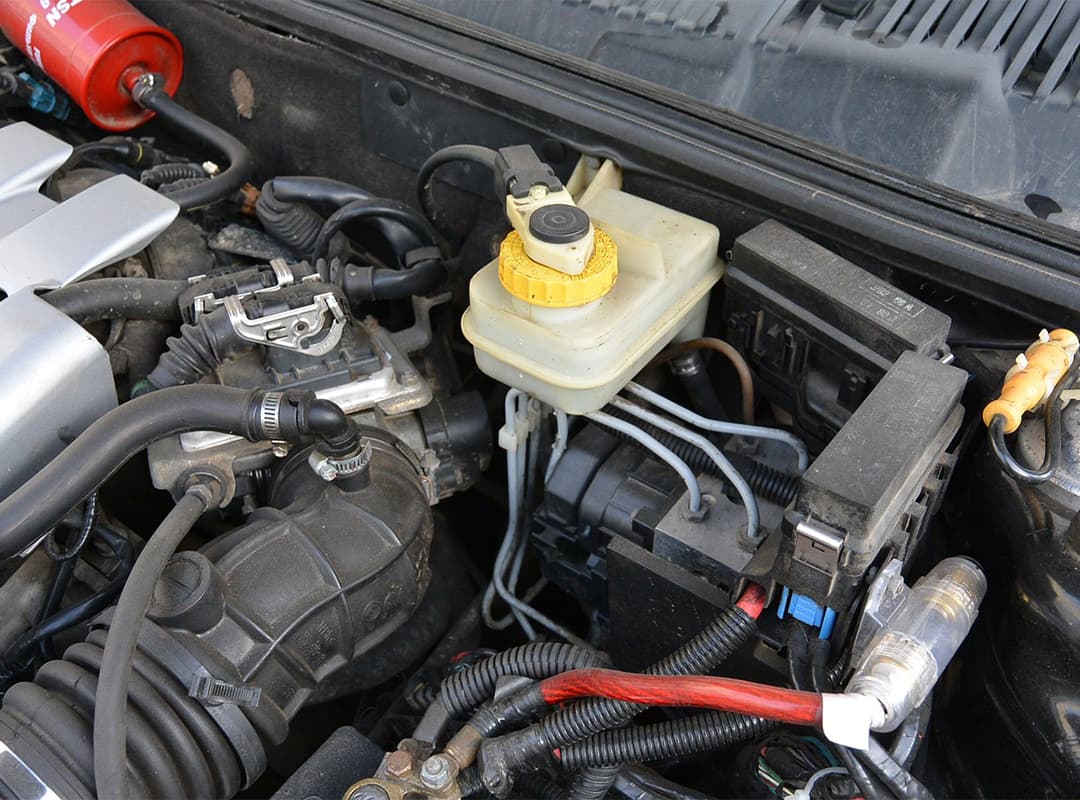As a car owner, you need to keep a close eye on many aspects of car maintenance, from fuel and engine oil levels to tire pressure and wheel alignment. However, while car owners usually pay attention to engine oil, changing it on time, brake fluid goes almost unnoticed.
The importance of brake fluid for road safety
The brake system is an important part of a car that ensures safety and must always work properly. Brake fluid is a type of hydraulic fluid that is used to stop the wheel from spinning and stop the car from moving. It works as follows: the pressure on the brake is transferred to the fluid, which presses the brake pads against the brake discs. The brake discs are attached to the wheel bushings, and this pressure helps to reduce the speed of the vehicle. Brake fluid is the key component that creates this pressure, meaning that without good brake fluid, your braking system will work less efficiently and possibly not work at all.
Types of brake fluid
Now that we understand the importance of brake fluid for road safety, let’s take a look at the different types of brake fluid and which one to choose for your vehicle.
- DOT 3 brake fluid: This type of fluid is ideal for car owners who live in flat areas and mostly drive under normal conditions. It is a polyglycol fluid with a boiling point of 140 degrees Celsius when wet and 205 degrees Celsius when dry. It is known for its ability to absorb moisture by about 2 percent of its volume over the course of a year;
- DOT 4 brake fluid: DOT 4 is similar to DOT 3, but is designed for use in mountainous regions. Both of these fluids are polyglycol-based and absorb 2 percent of moisture annually. The difference lies in the higher boiling point for DOT 4: 155 degrees Celsius wet, 230 degrees Celsius dry;
- DOT 5 brake fluid: DOT 5 is not intended for daily use. It is specially designed for racing cars and other high-performance vehicles. It has a silicone base with a synthetic additive, which means that it does not absorb moisture, but can also cause corrosion in the brake lines if not taken care of. DOT 5 brake fluid has a boiling point of 180 degrees Celsius when wet and 260 degrees Celsius when dry;
- DOT 5.1 brake fluid: DOT 5.1 is also designed for racing cars and high-performance vehicles, but it is compatible with vehicles that use an anti-lock braking system. Its performance is similar to DOT 3 and 4, and it can also absorb 2 percent more moisture annually.
What to consider when choosing brake fluid
When choosing brake fluid for your vehicle, it is important to consider the following aspects:
- Boiling point: First of all, you should pay attention to the boiling point of the brake fluid. Since the brake system generates high temperatures, it is possible that the brake fluid turns to vapor, resulting in a loss of brake performance. A dry boiling point indicates a new fluid, and a wet boiling point is a fluid that contains water after a period of use;
- Corrosion resistance: Brake fluid should repel corrosion in places such as anti-lock brake control valves, master cylinders, brake cylinders wheel brake calipers. Some brake fluids contain various additives to help fight corrosion;
- Viscosity: Viscosity is also important because it helps in high temperature performance, ensuring that stabilization, traction control and anti-lock brake systems work properly;
- Compatibility: Brake fluids are designed for specific brake systems, including disc and drum brakes. Make sure you understand which system is installed in your vehicle and choose a fluid that is compatible with your vehicle.
Choosing the right brake fluid is an important part of ensuring the safety and efficiency of your vehicle’s braking system. After considering the boiling point, corrosion resistance, viscosity and compatibility with your brake system, you can make an informed choice of the brake fluid that is best for your vehicle. Remember to follow the manufacturer’s recommendations and keep your brake system in good condition. Road safety is always a priority!
